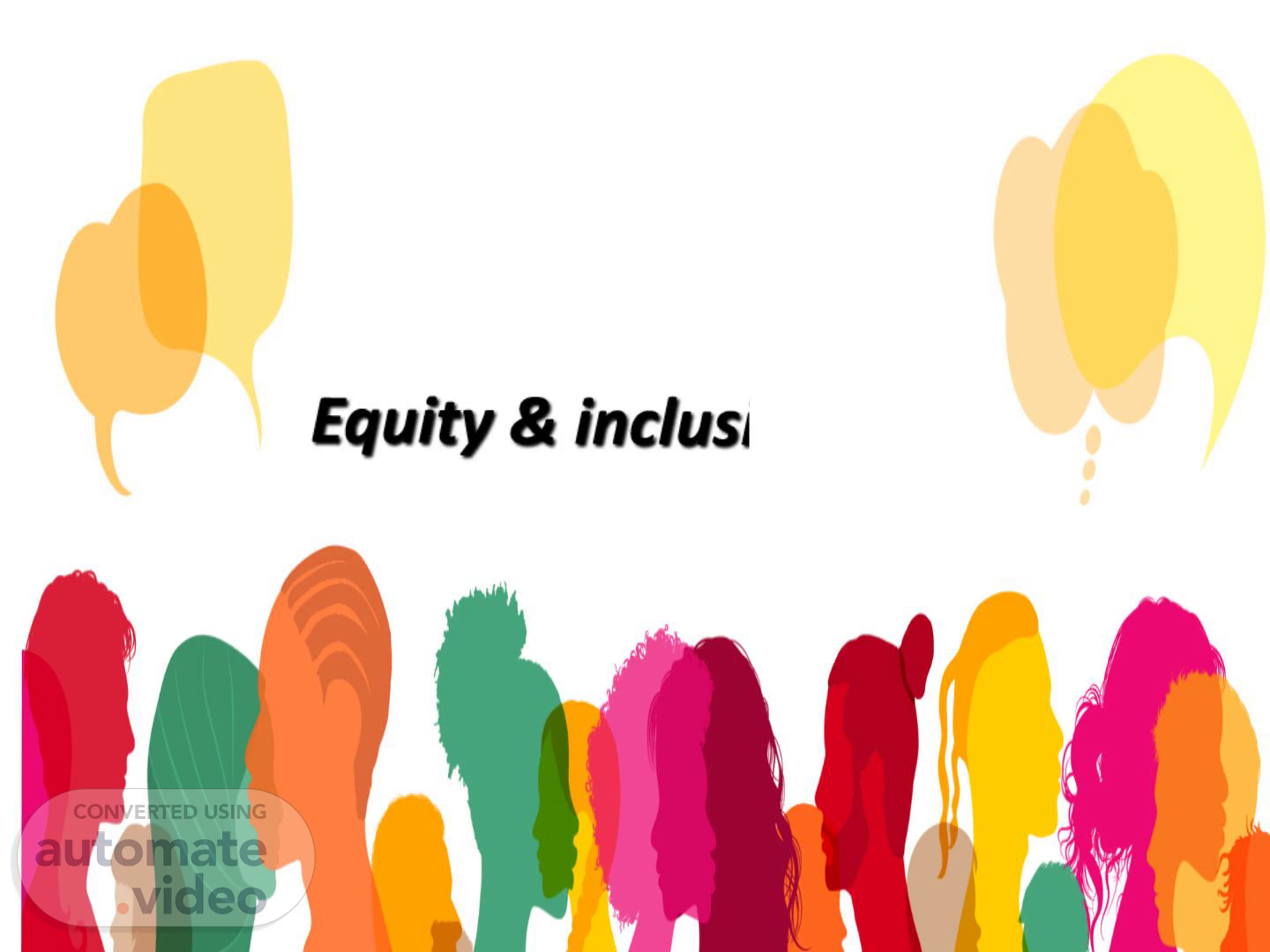Scene 1 (0s)
Equity & inclusiveness.
Scene 2 (7s)
Introduction Equity involves the fair distribution of resources, opportunities, and support based on individual needs to ensure everyone can succeed, correcting historical imbalances. Inclusion is the practice of making all individuals feel welcomed, valued, and respected within a group or environment, ensuring they are able to participate fully and have their voices heard..
Scene 3 (28s)
The principles of Equity & inclusiveness.
Scene 4 (58s)
providing fair access to resources and opportunities by acknowledging and addressing different circumstances and barriers, and actively creating environments where everyone is valued, respected, and able to participate fully. While equality gives everyone the same thing, equity provides different resources based on need to reach an equal outcome, and inclusiveness ensures that diverse people feel a sense of belonging and can contribute their unique perspectives. These principles promote justice and well-being by intentionally working to correct historical disadvantages and create environments where all social identity groups can thrive..
Scene 5 (1m 28s)
Example of inclusive cities. - Amsterdam, Netherlands: Ranked highly for its business environment, amenities, and openness, including strong LGBT support and a commitment to inclusive services. - Nagareyama, Japan: Implemented policies like convenient transportation and childcare centers to attract young families and create a more supportive environment for working parents, particularly mothers commuting to Tokyo..
Scene 6 (1m 50s)
Example of cities and their equity initiatives. - Cleveland, USA: Uses a Racial Equity Tool to assess the equity relevance of each action objective within its climate strategy. Madison, Wisconsin: Launched the Racial Equity and Social Justice Initiative (RESJI) to address and promote equity within the community..
Scene 7 (2m 10s)
Conclusion. - they are essential for fostering diverse, just, and thriving societies and organizations by ensuring fair access to resources and opportunities, creating a strong sense of belonging, and benefiting from diverse perspectives, ultimately leading to enhanced innovation, stronger social cohesion, better well-being, and increased economic growth. Achieving them requires holistic, evidence-based strategies, robust policies, and collaborative efforts from all stakeholders within an organization or education system..
Scene 8 (2m 36s)
Thank you.
